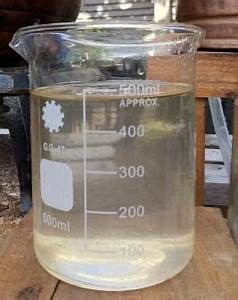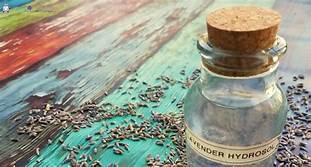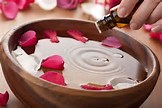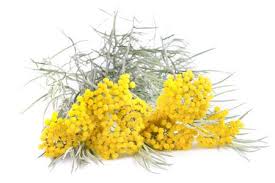Good Clean Fun - Hydrosols













Good Clean Fun - Hydrosols
I should ask one last thing here. Hydrosols are not only for health but also for pleasure. They can be played with, consumed, bathed in, washed with, poured in fountains, mixed with champagne, used on your pets, fed to your plants, and more. You can do whatever tickles your fancy with hydrosols, and you can afford to do it all.
Hydrosols are not expensive. Even organic, top quality hydrosols are reasonably priced, and they are virtually harmless. One mother I knoiw puts her two boys in the tub armed with plastic spray bottles of diluted lavender hydrosol, then she leaves them to it.
They have serious water fights and are graduating to hydrosol-filled water pistols! But it's just good clean fun, and they sleep like babies afterwards. She can rest assured that as long as one doesn't bonk the other with the sprayer, the hydrosols will never hurt them.
If you make your own hydrosols, therapeutic or not, you have a wonderful aromatic "goodie" to enrich your life in winter, summer, spring, or fall. Cook with them, in sweets and savories. Pour them into shampoos, creams, lotions, or any body-care product, just for the smell of it. Iron your clothes with hydrosols; the French do.
Spray your bed linens each night before retiring; pour some hydrosol in the rinse cycle of the washing machine or dishwasher. The sky is the limit here, and after all the talk of contimination, storage, and filtering, the bottom line is that hydrosols really are fun, easy, and safe to use. So get crazy, and let the living waters of distillation go with you.
Reference: Hydrosols: The Next Aromatherapy: Suzanne Katty
Home Distillation








Home Distillation
Home distillation kits are becoming the rage. This is happening both for the fun experience of the process and because people are moving from cheaper commercial oil to expensive organic and authenbtic oil. It is natural to assume that you can make your own oils, and there is a certain cachet to distillation.
However, as pointed out earlier, not everyone makes great oil, and some plant materials contains so little oil that even a big home still is too small to produce usable quantities of plants like chamomile, rose, and angelica. However, home stills will produce hydrosol and can easily be used for this purpose.
Generally speaking, hydrosols are of better quality when essential oil is produced in the distillation process. If you are not getting oil, it means one of two things. First, the oil is not being adequately extracted from the plants or is being lost during the process.
Remedying this will require modifications to the still, steam source, or distillation parameters. Second, the oil is all in solution in the hydrolate. Now, depending on how much you want the oil, this may or not matter to you. Although there is never much oil in solution, it usually averages around 0.05 to 0.2 milliliter per litre.
This can add up to a significant amount over several liters of hydrolate, and for this reason most home stills cohobate the waters. If you want your hydrosols to have maximum therapeutic value, you should not cohobate, but you will lose oil yield as a result.
A few years ago I rigged up a home distiller for hydrosol; whenever I processed oregano there was not a drop of oil to be seen, while sage and other plants, produced both lovely oil and water. The Oregano hydrosol was one of the strongest i ever had and I believe that was because of the quantity of the oil in suspension.
Remember also that we do not all live in the right climate for certain oil-bearing plants . Rose geranium, for instance, is African in origin, and although it will grow well ouside in northern summers, it does not produce the same wonderful aroma. And, of course, we don't all have cinammon trees in our yards. The home distillation enthusiast must be prepared for surprises and lots of experimentation.
Reference: Hydrosols: The Next Aromatherapy: Suzanne Catty
Making Hydrosols

 v
v





Making Hydrosols
While there is a body of knowledge, both written and oral, on essential-oil-distillation, there is much less knowledge about the co-production hydrosols. My own conversation with distillers reveal that making hydrosols differ quite a lot, depending on both the size of the still and the quantity and type of material being distilled.
It also varies from year to year, just as the parameters for oil production vary depending on the amount of rainfall, length of season, hours of sun,mean annual temperature, geographical location,and so forth. In a wet year, such as 1998, the plants contain more water, and this greatly affects both the oils and the hydrosols. In fact, the 1998 crop of hydrosols was very prone to bloom, had significant variations in pH, and had the shortest life spans of any I have dealt with thus far.
There are some basic rules for collecting hydrosols. Generally the still is allowed to run for a period before distillate waters begin to be collected. This is a bit complex to explain. First, the steam may actually run for some time before distillate begins to flow. In a still that holds five hundred kilograms of plant material, it may take from as little as thirty minutes to as long as two hours before the steam travels through the charge (plant material packed into the still) and makes it's way to the condenser vessel known as a Florentine flask. As was explained earlier. The Florintine allows the hydrosol to flow out, once the flask is full, while the precious essential oils remain within the flask. A neat bit of design.
When the distillate water begins to flow from the condenser, it is rare for there to be any oil in the few minutes. A small still with a high-oil-volume charge may produce oil within one to two minutes after flow commences; a larger still or a lower-oil volume plant material may not produce oil for quite some time. Some distillers believe that the hydrosol should be collected only from the moment the oil droplets start appearing. Others believe you should take it from the beginning of the run.
Then there is the question of when to stop collecting the distillate. It is widely agreed that you do not collect all the hydrosol from a run. The chemicals that come over in the oil at the late stages of distillation are primarily non-water-soluble, large, and heavy molecules, as these would not have an appreciable water-soluble component, the hydrosol at this point is becoming more and more water-like and could in fact dilute the hydrosol collected from the early stages.
But what is the cut off point? Here the alchemy and knowledge of the distiller are trump cards.
However, there is a scientific component based on the changing chemistry of the distillates as the process happens and the pH changes. As a rule of thumb, no more than two-thirds of the distillate waters, frequently as little as 20 percent, is generally kept for use as hydrolate; the rest is allowed to flow away or is returned to the fields and the plants that were its source.
Reference: Hydrosols: The Next Aromatherapy: Suzanne Katty
Economics - Hydrosols









Economics - Hydrosols
But there is a finite amount of therapeutic quality product available. Every year there is more, but demand is outstripping supply, and as with any natural product, there are no guarantees on yearly output. Nineteen ninety-nine saw a major harvest crisis in Helichrysum italicum, the herb known as immortelle.
The resulting shortage caused the price of immortelle oil to nearly triple. This drastic situation coincided with a huge surge in copnsumer and practitioner interest in the oil hydrosol, which has extraordinary health properties. The result is that immortelle may now sell for the same price as jasmine absolute.
Perhaps it is also because of the economics, at least in part, that hydrosols are becoming better known. As was discussed earlier, the sales of hydrosols can provide significant added income to the distiller. If the revenue from the sale of hydrosols is added to the income from the sale of essential oil, even in a year of low yields distillers will be able to offset some of their losses on the oil with the income from the water.
The distillation business is hard work, a labor of love requiring skilled employees for every aspect, and not everyone makes a good distiller. I like to compare it to wine production: anyone can make wine, but not evryone makes Chateau lafitte.
Reference: Hydrosols: The Next Aromatherapy: Suzanne katty
Articles - Most Read
- Home
- What are Hydrosols
- What are Hydrosols-2
- The Monographs
- How to Make a Hydrosol
- Table of Common Latin Names and pH Values - F - O
- Distilled or Extracted Specifically For Therapeutic Use - 3
- Kurt Schnaubelt
- What isn't a Hydrosol?
- Table of Common Latin Names and pH Values - P - S
- Wholly Water!
- Blue Babies
- Supply and Demands
- Mature Skin
- Recipes Alpha F
- Hydrosols In The Marketplace
- Chemicals: Friends or Foes?
- Hemorrhoids
- Nelly GrosJean
- Water as Medicine
- The Educated Consumer
- Genitically Modified Plants
- Influences
- Water Quality
Articles-latest
- Daucus carota/Wild Carrot Seed - pH 3.8-4.0
- Cupressus sempervirens/ Cypress-pH3.5-3.7
- Coriandrum sativum/Coriander Herb-and-Seed
- Comptonia peregrinal/Sweet Fern- pH 3.8
- Citrus clementine (fe) Clementine Petitgrain- pH 4.3-4.4
- Citrus aurantium var. amara (flos) /Neroli Orange Blossom-pH3.8-4.5
- Cistus ladaniferus/Rock Rose-pH 2.9-3.1
- Cinnamomum zeylanicum (ec) Cinnamon Bark-pH3.3
- Chamaemelum nobile/Roman Chamomile - pH 3.0-3,3
- Centaurea cyanus/Cornflower/Bachelor's Button-pH 4.7-5.0
- Cedrus atlantical/Cedarwood/Atlas Cedar-pH 4.1- 4.2
- Hydrosols -The PH - Anomalies
- Hydrosols- Establishing Shelf Life and Stability
- Boswellia carterii/FRANKINCENSE
- Asarum canadense/ Wild Ginger/Canadian Ginger
- Artemesia vulgaris / Artemesia
- ARTEMESIA DRACUNCULUS - TARRAGON
- Angelica archangelica / Angelica Root - Hydrosols
- The Key, or More Correctly, the pH - 2 - Hydrosols
- The Key, or More Correctly, the pH-Hydrosols
- The Hard pHacts - Hydrosols
- Calamus Root/Sweet Flag - ACORUS CALAMUS
- Yarrow - Achillea millefolium - Hydrosols
- Balsam Fir - Abies balsamea - Hydrosols

